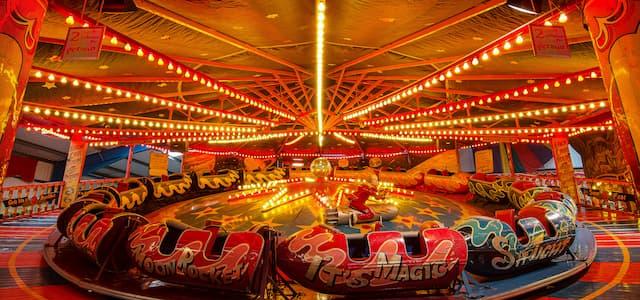
Earliest watercolour of Henry VIII’s Nonsuch palace saved
The V&A Museum has acquired the earliest and most detailed depiction of Henry VIII’s famed lost palace of Nonsuch that once stood in Cheam, Surrey. This signed and dated watercolour by the celebrated Flemish painter Joris Hoefnagel was made in 1568.

Subject to a temporary export ban earlier this year, it has now been saved for the nation. Purchased with the assistance of the National Heritage Memorial Fund (NHMF) and the Art Fund, the watercolour – the most faithful of only six surviving depictions of the palace – joins the national collection of British miniatures and watercolours at the V&A. It will go on display in the Museum’s British Galleries from Saturday 10 December.
Called Nonsuch, as no other palace could compare with it, this ambitious building was commissioned by Henry VIII in 1538. Its towered façade decorated with elaborate plasterwork in a Franco-Italianate style sought to rival Fontainebleau, the residence of Henry’s arch competitor, the French king François I. Its lavish stucco reliefs and carved slate decoration, all portrayed by Hoefnagel in exquisite detail, made the palace one of the most important buildings of the English Renaissance. Still unfinished at the king’s death in 1547, it was purchased from Mary I in 1557 by Henry Fitzalan, 12th Earl of Arundel (1512-80), who completed the palace and most likely commissioned Hoefnagel’s watercolour. The palace was later acquired by Elizabeth I in 1592 and became one of her favourite residences. It stood for nearly 150 years, but was demolished between 1682 and 1688 by Charles II’s mistress, the Duchess of Cleveland, who sold its raw materials to pay off her gambling debts.
Mark Evans, Senior Curator of Word and Image at the V&A, said: “Painted in 1568 by the last of the great Flemish illuminators and a foremost topographical artist of the day, this is a rare and beautiful work of outstanding importance. Among the earliest surviving English landscape watercolours, it brings to life one of the greatest monuments of the English Renaissance, now lost to us. We are delighted to acquire a picture of such quality and historical importance for our visitors to enjoy.”
Sir Peter Luff, Chair of NHMF, said: “The National Heritage Memorial Fund was set-up to protect the UK’s most precious heritage at risk. And on the cusp of being lost abroad we felt it essential that this rare and beautifully detailed artwork, documenting one of our most important lost palaces, stay in the UK for us all to enjoy.”
Stephen Deuchar, Art Fund director, said: “Given the exceptional rarity of this work and its depiction of such a celebrated architectural monument, it would have been very sad to see it sold abroad. So we’re really pleased it will remain here in the expert hands of the V&A, where it can now be shared with a wide public.”
Born at Antwerp in 1542, Joris Hoefnagel was a highly cultured painter who corresponded with humanists and ended his days at Vienna as court artist to the Holy Roman Emperor. He travelled widely and the newly acquired watercolour proves that he visited England in 1568. Hoefnagel contributed over 63 topographical views to the atlas of world towns, Civitates Orbis Terrarum, published in Cologne in six volumes between 1572 and 1617. This is his first major work to enter the collection of the V&A.
Notes to editors
About the V&A
The V&A is the world’s leading museum of art and design with collections unrivalled in their scope and diversity. It was established to make works of art available to all and to inspire British designers and manufacturers. Today, the V&A’s collections, which span over 5000 years of human creativity in virtually every medium and from many parts of the world, continue to intrigue, inspire and inform. The Museum has collected paintings since its inception in 1857 and holds both the national collection of British miniatures and watercolours and the national collection of architectural drawings.
About the Art Fund
Art Fund is the national fundraising charity for art. In the past five years alone Art Fund has given £34 million to help museums and galleries acquire works of art for their collections. It also helps museums share their collections with wider audiences by supporting a range of tours and exhibitions, and makes additional grants to support the training and professional development of curators. Art Fund is independently funded, with the core of its income provided by 122,000 members who receive the National Art Pass and enjoy free entry to over 240 museums, galleries and historic places across the UK, as well as 50% off entry to major exhibitions and subscription to Art Quarterly magazine. In addition to grant-giving, Art Fund’s support for museums includes Art Fund Museum of the Year (won by the V&A, London, in 2016) and a range of digital platforms.
Find out more about Art Fund and the National Art Pass at the Art Fund website.
For further information please contact Madeline Adeane, Press Relations Manager, madeane@artfund.org / 0207 225 4804.
Further information
For further press information please contact Laura Mitchell in the V&A press office on +44 (0) 20 7942 2503
A selection of press images are available to download free of charge from pressimages.vam.ac.uk.

